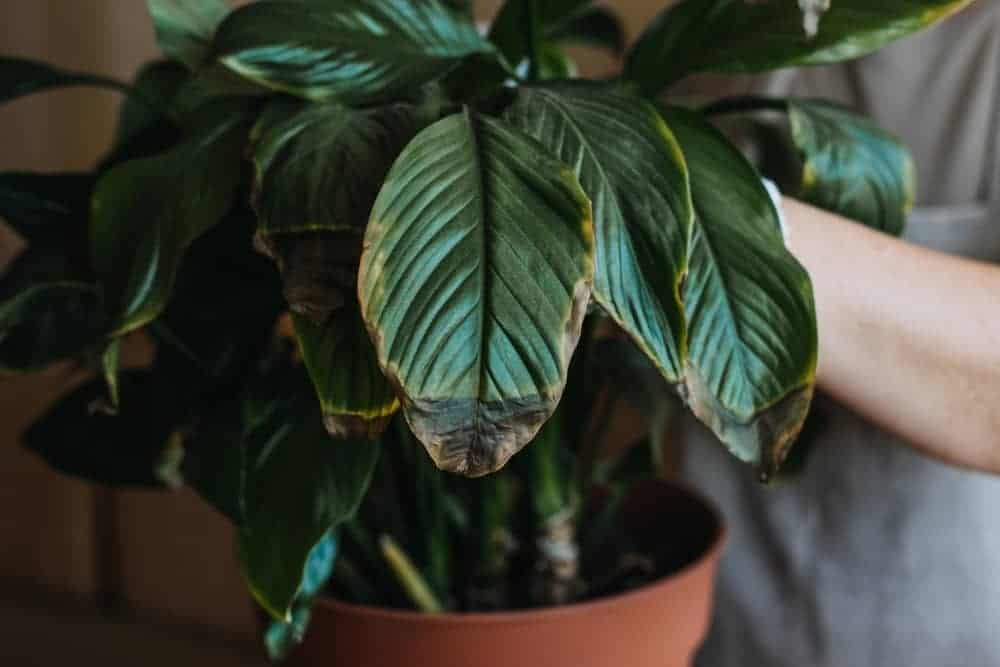Black spots on plant leaves, those unsightly blemishes that mar the beauty of your cherished greenery, can strike fear into the heart of even the most seasoned gardener. But fear not! By understanding the enemy and implementing the proper strategies, you can effectively combat these fungal foes and restore the vibrant health of your plants.
Unmasking the Culprit: Unveiling the Black Spot Foe
Black spots are not a single disease entity, but rather a symptom caused by various fungal pathogens. These microscopic organisms thrive in warm, humid environments and invade plant tissues, leaving behind unsightly dark blemishes.
1.1 Fungal Foes: Demystifying the Pathogens Behind Black Spots
One of the most common culprits is Diplocarpon rosae, responsible for black spot disease in roses. This fungus overwinters on infected debris and releases spores in spring, readily infecting new growth during wet weather. Venturia inaequalis is another notorious offender, causing black spot on apple trees. Similarly, Elsinoë spp. fungi target a wide range of ornamentals and fruit trees, each with its specific host preference.
1.2 Susceptible Species: Identifying Plants Prone to Black Spot Attacks
While any plant can potentially succumb to fungal diseases, some species are particularly vulnerable to black spots. Roses, of course, are a classic example. Other susceptible ornamentals include hollyhocks, crape myrtles, and maples. Fruit trees like apples, pears, and peaches are also frequent targets. Recognizing the specific plant vulnerability is crucial for implementing targeted control strategies.
Early Detection is Key: Recognizing the Signs of a Black Spot Invasion
Early intervention is paramount in effectively managing black spots. By familiarizing yourself with the initial signs of infection, you can take action before the disease becomes widespread.
2.1 The Telltale Spots: Visual Cues for Identifying Black Spot Disease
The first indication of black spots is usually the appearance of small, dark brown or black circular lesions on the leaves. These spots may have a fringed border and often begin on the lower foliage, gradually progressing upwards as the disease intensifies.
2.2 Progression of the Problem: How Black Spots Spread and Intensify
Left unchecked, the black spots will enlarge and coalesce, eventually turning the leaves yellow and causing them to drop prematurely. In severe cases, the fungus can infect stems and fruit, further compromising plant health and yield.
Combating the Infiltration: Effective Strategies for Eradicating Black Spots
There’s a multi-pronged approach to tackling black spots. A combination of cultural controls, organic solutions, and, in extreme cases, fungicides, can effectively manage the problem and restore the health of your plants.
3.1 Cultural Controls: Fostering a Plant Environment Unsuitable for Black Spots
Cultural controls focus on altering the growing environment to make it less hospitable to fungal growth. These practices are preventive in nature and can significantly reduce the risk of black spot outbreaks.
3.1.1 Proper Watering Techniques: Avoiding Practices that Encourage Fungal Growth
Overwatering is a recipe for fungal diseases. Water deeply but infrequently, allowing the soil to dry slightly between waterings. Avoid overhead watering, as this promotes moisture retention on leaves, creating a breeding ground for fungal spores.
3.1.2 Enhancing Air Circulation: Promoting Airflow to Discourage Fungal Spores
Fungi thrive in stagnant air. Prune congested branches to improve air circulation around your plants. Additionally, spacing plants appropriately allows for better air flow and reduces leaf wetness duration.
3.1.3 Sanitation Measures: Removing and Disposing of Infected Plant Material
Regularly remove and dispose of fallen leaves, infected plant debris, and prunings. Do not compost this material, as fungal spores can survive and re-emerge later. By removing these reservoirs of infection, you significantly reduce the risk of further spread.
3.2 Organic Solutions: Natural Approaches to Controlling Black Spots
For mild black spot infestations, several organic options offer effective control. These methods are often safer for the environment and beneficial insects than chemical fungicides.
3.2.1 The Power of Baking Soda: A Fungicidal Foliar Spray
Baking soda, a common household ingredient, possesses mild fungicidal properties. Mix one tablespoon of baking soda with a gallon of water and a few drops of dish soap to enhance adhesion. Spray this solution on your plants thoroughly, focusing on the undersides of leaves, every one to two weeks.
3.2.2 Harnessing Neem Oil: A Natural Broad-Spectrum Fungicide
Neem oil, derived from the neem tree, is a natural broad-spectrum fungicide effective against various fungal diseases, including black spots. Follow the manufacturer’s instructions for dilution and application rates.



